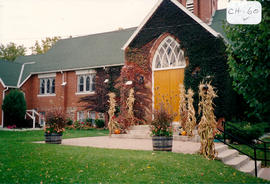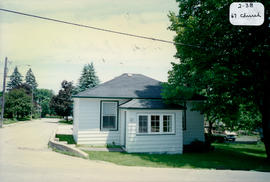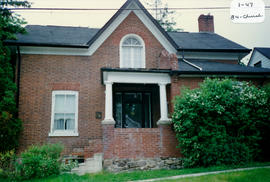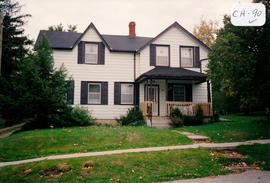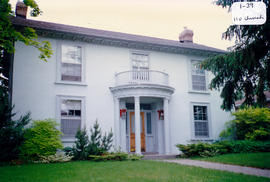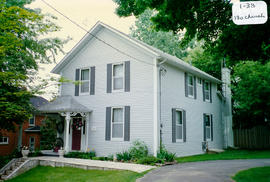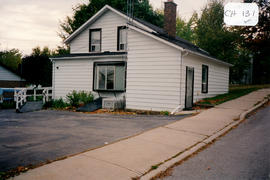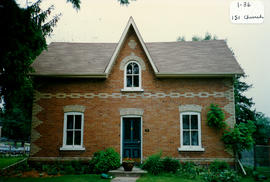- CA BWGPL GJ-HB-2017-03-17-11
- Item
- 1996
Part of George Jackson fonds
The mid-block building located at 23 Church St. was built pre-1900 in the Neoclassical style. The two-storey, five-bay structure has a rectangular, centre-hall plan and a medium-pitched, gable roof. There are chimneys at either end of the gable. The openings are symmetrically located, but the size, configuration, and material of the windows have been altered from the original. A Regency-like porch has been completely infilled. Originally, it would have been open and supported by simple wood columns. The house has wood frame construction with vinyl siding. The original siding was probably wood. According to the 2000 inventory, alterations to the front façade are unsympathetic with the original building. It also notes that few existing building elements appear to be original other than the building’s base form. (1, 3)
George Jackson


